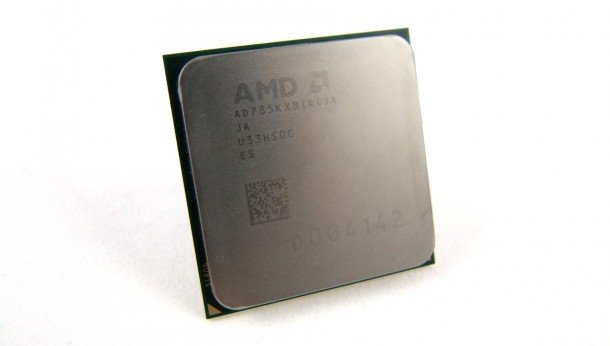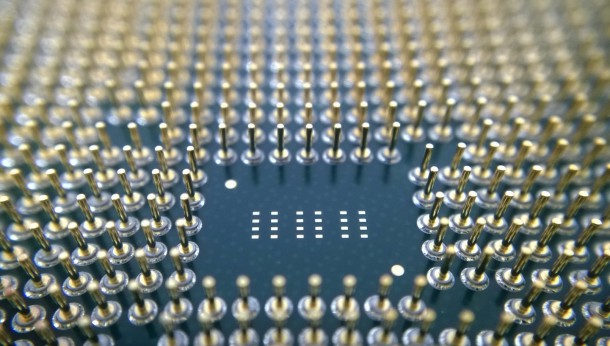Our Verdict
Potentially very interesting, and pretty good on sans discrete GPU, but if youre pairing it with a graphics card there are much better options out there.
PC Gamer's got your back
AMD's latest processor design is probably the most interesting new chip from the Texan silicon giant since they released their Bulldozer FX chips on the world. And, on first glance at the performance metrics, it would be just as easy to dismiss the new APU as a bit of a failure.
But there is more to the A10-7850K - the APU formerly known as Kaveri - than meets the eye, though it might be a while before its promise is completely realised. Let's talk about the actual processor performance first though. It's pretty unspectacular.
I was hoping for a bit more of a boost over their current top APU, the A10-6800K. That's mainly because AMD are using the latest update to the Bulldozer CPU architecture, code-named Steamroller.
The way the original Bulldozer design worked out meant each dual-core module shared a lot of resources. That gave it great multi-threaded performance because it could have a whole bunch of cores in the CPU package. Unfortunately each of those cores actually performed worse on their own than the AMD processors they were replacing.

Steamroller then was cooked up to give each core in a module more individual resources to help it perform better in single-threaded use. Sadly when it comes to the A10-7850K, with a pair of Steamroller modules and four cores, the lower clock speed compared with the A10-6800K (3.7GHz plays 4.1GHz) seems to have robbed it almost entirely of any performance benefits.
Thankfully that doesn't ring true when it comes to graphics performance. One of the biggest selling points about the Kaveri APUs is their use of the same Graphics Core Next (GCN) architecture as the top graphics cards from AMD. Push the GPU portion of the A10-7850K with a little light overclocking and you'll get a 36% boost in gaming frame rates over the previous chip. It's realistically the only chip around today you could use without a discrete card and still be able to game on it at decent speeds. I'm not talking about the highest resolutions or at the highest settings, but it's still possible.
The future though is potentially more exciting. This is the first ever processor that is completely compatible with the twin tech of the heterogeneous system architecture (HSA) and Mantle. That means when the software is utilising those two technologies we ought to see AMD APUs doing some genuinely impressive things.

Right now the A10-7850K is still a long way behind the Intel chips in terms of gaming performance with a discrete card in place. The benefit of the recently-released Mantle beta though shows that gap closing. Using the Mantle-enabled Battlefield 4 the performance difference, between the A10-7850K with an R9 290 and an i5 4570 with the same card, is actually halved. In standard DirectX mode there is a 44% difference in average frame rates - that drops to 20% when you switch to the Mantle API.
The A10-7850K is also a fair bit behind AMD's FX line of straight CPUs too, despite being only marginally cheaper, but again Mantle will halve the deficit. The difference is smaller, but it's most definitely still there. And on those terms, the A10-7850K is simply not a worthy basis for a full gaming rig with a decent discrete GPU. The price difference between it and an i5 4570 isn't that great, and even less between it and an eight-core FX-8350. For a small form factor, low-cost PC though, running in integrated graphics alone, it will give you impressive gaming performance without the need for a full GPU.
Vital stats
Clockspeed - 3.7GHz
Turbo - 4GHz
Cores - 4
Threads - 4
Process tech - 28nm
Socket - FM2+
GPU - Radeon R7
Radeon cores - 512
Clockspeed - 720MHz
Benchmarks
Single-threaded CPU performance
Cinebench R11.5 - Index score: higher is better
AMD A10-7850K - 1.02
AMD A10-6800K - 1.10
Intel Core i5 4570 - 1.57
Multi-threaded CPU performance
Cinebench R11.5 - Index score: higher is better
AMD A10-7850K - 3.59
AMD A10-6800K - 3.58
Intel Core i5 4570 - 6.16
Discrete DX11 gaming performance (AMD Radeon R9 290)
Battlefield 4 (1080p, Ultra) – FPS: higher is better
AMD A10-7850K – 57
AMD A10-6800K – 52
Intel Core i5 4570 – 72
Integrated DX11 gaming performance
Bioshock Infinite (1080p, High) – FPS: higher is better
AMD A10-7850K – 23
AMD A10-6800K – 20
Intel Core i5 4570 – 15
Potentially very interesting, and pretty good on sans discrete GPU, but if youre pairing it with a graphics card there are much better options out there.

Dave has been gaming since the days of Zaxxon and Lady Bug on the Colecovision, and code books for the Commodore Vic 20 (Death Race 2000!). He built his first gaming PC at the tender age of 16, and finally finished bug-fixing the Cyrix-based system around a year later. When he dropped it out of the window. He first started writing for Official PlayStation Magazine and Xbox World many decades ago, then moved onto PC Format full-time, then PC Gamer, TechRadar, and T3 among others. Now he's back, writing about the nightmarish graphics card market, CPUs with more cores than sense, gaming laptops hotter than the sun, and SSDs more capacious than a Cybertruck.


